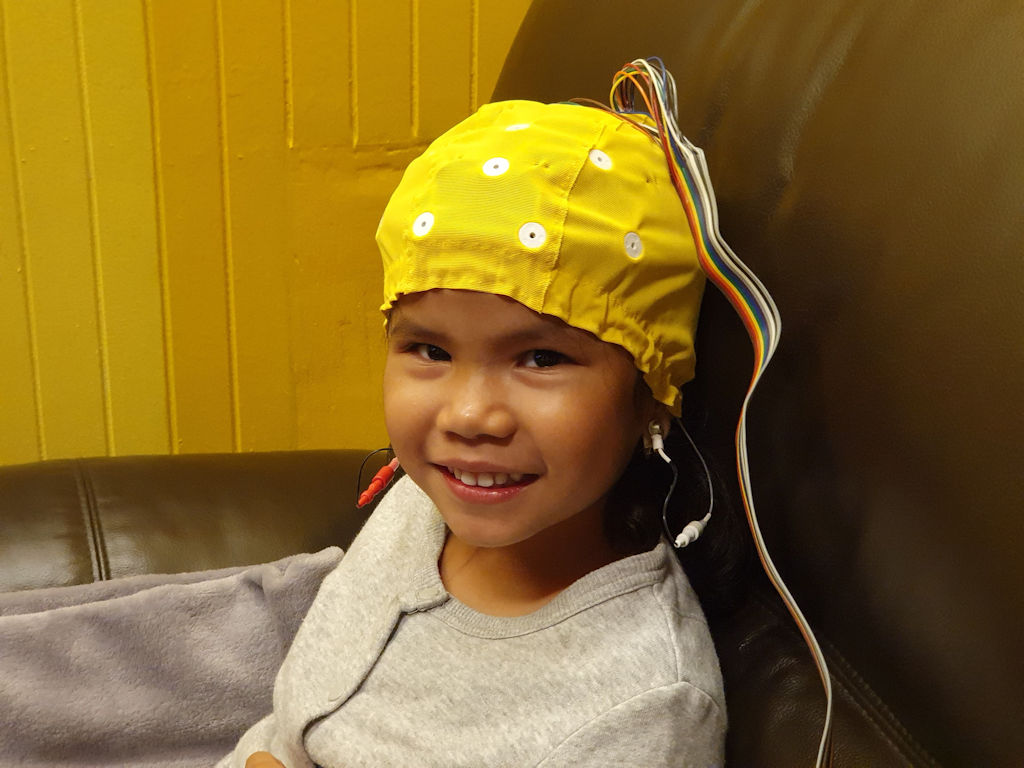
For so many years, taking pills and talking to a therapist is how people cope with mental health issues. Now, there’s a new non-invasive way of training your brain to become healthier, stronger and more focused.
Neurofeedback therapy is becoming increasingly popular in treating depression, anxiety, migraines, ADHD to name a few. But what exactly is neurofeedback therapy and how does it work?
We’re here to answer all of your questions. Here’s everything you need to know about this reward-based training system for your brain!
What is Neurofeedback
Also known as EEG Biofeedback, neurofeedback is a way of direct brain function training without the use of any invasive methods. Instead, it uses electrodes.
These electrodes, attached to your scalp (without pain), will amplify and record brainwaves via an EEG, as well as control visual, auditory, and tactile feedback. In other words, neurofeedback is simply applying biofeedback to your brain and creating healthier neuropathways. It’s training in self-regulation that will help your brain function better and improve cognitive, behavioral, and emotional functioning.
Brief History
In the 1920s, the very first EEG device was created by a German psychiatrist named Hans Berger. By the 1960s, Joseph Kamiya and Barry Sterman pioneered neurofeedback.
Kamiya found that through a reward-based system, it was possible for people to control their own brain waves.
He went on to train people to reach an alpha state by using the sound of a bell as a reward, giving real-time feedback based on a person’s EEG monitoring making it the first instance of neurofeedback therapy.
At the same time, Sterman found that cats can be trained to increase their brainwaves to a certain frequency by rewarding them with treats. The frequency became known as Sensorimotor Rhythm (SMR).
By the 1970s, Joel Lubar started a study on using neurofeedback to treat Attention Deficit Hyperactivity Disorder (ADHD). From then on, several other research emerged on neurofeedback therapy.
How it can help
Today’s common conditions like ADHD, anxiety, depression, and more usually occur when you have brain waves that are out of alignment.
With neurofeedback, you can train specific areas of your brain so it can function at its best by training it to ignore older, harmful neuropathways and to follow newer, healthier pathways. Not only that but it can also provide relaxation, brain flexibility, and a more resilient central nervous system. This allows the brain to easily adapt to challenging situations.
Neurofeedback vs Medication
In comparison to medication, neurofeedback has shown to have longer-lasting effects.
A new study published in the medical journal European Child & Adolescent Psychiatry shows that neurofeedback provides long term benefits in children with ADHD. In fact, its effects tend to improve over time without any ongoing treatment. This is compared to participants who are still taking medication during the 6th month follow up.
Rather than simply masking problems, neurofeedback aims to treat the main problem. Medications are only effective up to 12 hours while neurofeedback shows benefits 5 to 10 years after treatment.
How it works

So how does neurofeedback work?
For the past years, research has indicated that our brains are malleable. With operant-conditioning, we can influence our brains to act in desirable ways. This is what neurofeedback is based on.
Before treatment, the brain will be mapped out with Quantitative EEG (QEEG) to identify which areas are not balanced.
During the session, sensors will be placed on the targeted areas of the brain to measure brain activity. The patient is then instructed to do specific activities which may include playing video games or listening to music.
These activities will help the brain process information in several ways. When the brain responds to the stimuli, the feedback seen on the EEG will show how each stimulus affects brain activity.
When your brain is near a comfortable state, you’ll be rewarded with a positive response in the form of a sound, movie, or a game. It will show you whether your brain is approaching the desired state.
With time and repetition, your brain will be trained to reach a more comfortable and efficient state. That’s it. Nothing is being put in your brain. Neurofeedback is all about checking your brain wave activity and feeding the information back to you.
Frequently Asked Questions
Here are some frequently asked questions regarding neurofeedback therapy.
Will there be any electricity put into my head?
There won’t be any electricity or energy put into your head. Neurofeedback therapy only uses non-invasive techniques and equipment which detects brain activity.
Who provides neurofeedback therapy?
Mental health professionals such as counselors, psychologists, and family therapists are usually the ones who provide neurofeedback therapy. However, clinical social workers, rehabilitation specialists, and nurses can also provide this service with the right training.
Is neurofeedback harmful?
It won’t if you go to Certified Neurofeedback Specialists who know how to properly use their equipment. They have certified training and an in-depth understanding of the brain, so you can just show up and relax.
Is neurofeedback only used for mental health issues?
No. Neurofeedback is used in a lot of conditions such as:
- Addiction Recovery
- ADHD/ADD
- Anger
- Anxiety and Depression
- Autism
- Concussions and Traumatic Brain Injury
- Disruptive Behavior Disorders/ Bipolar Disorder
- Intimacy Issues
- Memory Concerns.
- Migraines
- PTSD
- Seizures
- Sleep Issues
- Suicidal Behavior
Aside from these, business executives and athletes also take advantage of neurofeedback therapy to help them reach their peak performance, manage their stress, and improve their focus.
Do therapy effects last?
If the therapy aims to solve problems concerning brain misalignment, then yes. The therapy effects do last for a long time. However, if the problem concerns degenerative conditions such as dementia or Parkinson’s, then there is a need for ongoing therapy. As for patients living in a toxic environment that affects them psychologically, then the effects of therapy might not last that long.
Final Thoughts
All in all, neurofeedback therapy is becoming more popular. People are seeing the benefits that it brings and more researches show positive results.
If you want to give neurofeedback therapy a try, it’s important that you find certified specialists who know what they’re doing.
Do you have any more questions about neurofeedback? Let us know in the comments and we’ll do our best to get back to you.



